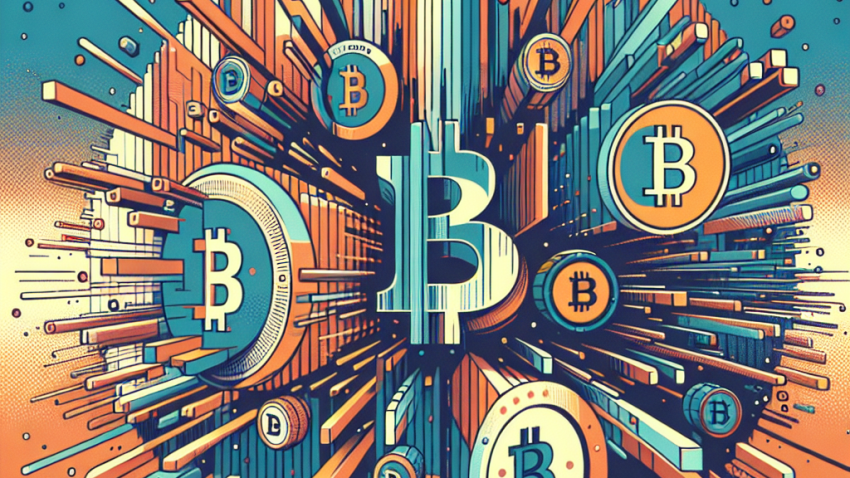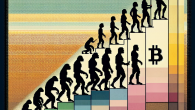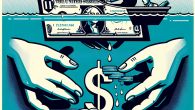
Are Central Bank Digital Currencies a Threat to Commercial Banking?
The Rise and Rattle of Global Interest Rates: What Is Driving the Shift?
Ah, interest rates—those quiet titans of global finance that sway economies with the subtlety of a maestro conducting a symphony. We’re currently witnessing a global recalibration of interest rates not seen since your grandfather wore bell-bottom suits and shouted at gold prices. But what’s truly behind the tectonic shake-up in monetary policy around the world? Buckle in, dearest readers, as we journey through the geopolitical chessboard, inflationary currents, and central bankers’ midnight dilemmas.
The Age of Cheap Money Is Fading
For over a decade, the global economy basked in the soothing lull of ultra-low interest rates. Born during the Great Financial Crisis of 2008 and nursed through the COVID-19 pandemic, these historically low rates were intended to stimulate borrowing, encourage investment, and prevent the global economic engine from stalling altogether. But like all good parties, the low-rate soiree had to end.
As inflation reared its fiery head in 2021 and 2022, triggered by supply chain disruptions, energy crises, and a bit of geopolitical drama (thank you, Eastern Europe), central banks from the U.S. Federal Reserve to the European Central Bank decided enough was enough. Rate hikes began, tentatively at first, and then with the conviction of a headmaster delivering discipline to unruly capital markets.
What’s Fueling the Rise?
Let’s examine the primary dynamics pushing global interest rates upward:
- Persistent Inflation: While some inflationary pressures—ahem, used cars—have cooled, others like food, housing, and energy remain sticky. Central banks are focused on pulling inflation down to their 2% targets, even if that comes at the cost of slowing economic growth.
- Labor Markets on Fire: In major economies like the U.S. and UK, unemployment remains stubbornly low. Strong wages and labor demand continue to fuel household spending, making inflation more difficult to tame. It’s hard to cool prices when everyone’s still dining out on Tuesdays, isn’t it?
- Tightening Financial Conditions: Central banks aren’t the only ones influencing rates. Bond markets have started anticipating longer periods of higher rates, affecting everything from mortgage rates in New York to corporate loans in Singapore.
- A Strong Dollar: Rising interest rates in the U.S. have bolstered the dollar, forcing central banks in emerging markets to hike their own rates to avoid a flight of capital and currency depreciation—a domino effect across continents.
The Federal Reserve and the ‘Higher for Longer’ Philosophy
The Federal Reserve, under Chairman Jerome Powell, has signaled its commitment to maintaining higher rates until inflation is firmly under control. The notion of “higher for longer” is no longer a speculative remark—it’s a forward guidance mantra.
In Fed speak, this means:
- No premature rate cuts simply because markets *hope* for them.
- Continued data dependency: Every CPI print and jobs report could influence the monetary trajectory.
- Intentional tightening: The Fed would rather risk a mild recession than let inflation expectations become unmoored.
Markets, of course, continue to flirt with over-optimism. Every deceleration in CPI is met with premature celebration—only to be interrupted by robust labor figures the following week. If the global markets were a character, I dare say it would resemble a teenager promising to do chores after “just five more minutes” of video games.
Europe’s Reluctant Shift
Across the Atlantic, the European Central Bank (ECB) has also joined the tightening party, albeit hesitantly. Europe’s economic context differs significantly from the U.S.—lower growth potential, greater energy dependence, and more diverse inflation profiles across the Eurozone.
Still, ECB President Christine Lagarde has shown resolve in increasing rates, even if that risks pushing the continent closer to stagnation. The delicate act of raising rates while avoiding fragmentation—the widening of yields among member nations—is no small feat.
The Emerging Market Tightrope
Emerging markets have traditionally been the canary in the interest rate coal mine. Higher rates in developed economies often result in capital outflows, currency depreciation, and stock market volatility in less developed financial systems.
However, some emerging markets, like Brazil and Mexico, were ahead of the game. They began raising rates early in the cycle, giving them more room to maneuver now. As strange as it sounds: the old kings of inflation are now the forward-looking darlings of monetary rigor.
Other nations, unfortunately, were caught flatfooted—leading to more disruptive macroeconomic adjustments, including currency controls, aggressive monetary shock therapy, and, in some cases, negotiations with the IMF (which are rarely initiated over a glass of chardonnay).
The Impact on Global Markets
So, what does “higher global interest rates” actually do to financial markets and investment behavior?
- Equities Feel the Pressure: Higher rates increase the opportunity cost of holding equities. Growth stocks, in particular, suffer due to declining future cash flow valuations.
- Bonds Are Back: Bonds are sexy again. No longer yielding a paltry 0.3%, U.S. Treasuries and high-grade corporate bonds now offer real yields, prompting a shift in portfolio allocations.
- Banking Woes: Higher rates have stressed the balance sheets of banks with fixed-rate bond portfolios (see the demise of Silicon Valley Bank as Exhibit A).
- Currency Wars: High rates contribute to currency volatility as capital chases yield. Countries not in step with global rate trends often face speculative attacks on their national currencies.
Looking Ahead: Are We Done Yet?
Ah, the million-dollar question. Are we approaching the terminal rate—the peak of this tightening cycle? Possibly. But unlike your GPS map, central banks don’t offer arrival times. They navigate with rear-view mirrors (retrospective data) and foggy windshields (forward estimates).
What we know is this: central banks remain highly data-dependent, keen on avoiding both premature easing and inflation resurgence. Monetary policy will likely remain tight into the near future, potentially well into next year, depending on inflationary trends and economic resilience.
What Investors and Professionals Should Do
If you’re navigating this era of tighter liquidity, consider these strategies:
- Reassess Risk: Review your portfolio exposure to rate-sensitive assets. Consider duration, credit risks, and sector exposure.
- Diversify Geographically: Global rate differentials can open arbitrage and hedging opportunities. A more globally diversified portfolio may offer resilience.
- Hold Liquidity Wisely: Elevated money market yields present a rare case where holding cash is not a drag but a strategy.
- Follow Policy Clues: Stay updated on central bank minutes, inflation reports, and labor market data—they’re the modern version of tea leaves.
Final Thoughts from the Professor’s Desk
In conclusion, the era of easy money is ending—not in a blaze of glory but in a slow, deliberate, and studied disengagement. Global interest rates are rising not out of whim or vengeance but from necessity. Macroeconomic imbalances, inflationary pressure, and evolving geopolitical risks require firmer monetary hands.
As always, the prudent investor watches not just the rate changes, but the reasons behind them. It’s not just about the numbers—it’s about the narratives. And from what I gather sipping my third cup of Darjeeling this morning, the narrative is “prepare, don’t panic.”
Until next time,
Dr. Alistair P. Whitmore
For more insights on global economic trends, visit our About Us or Contact Us page.









Leave a Reply